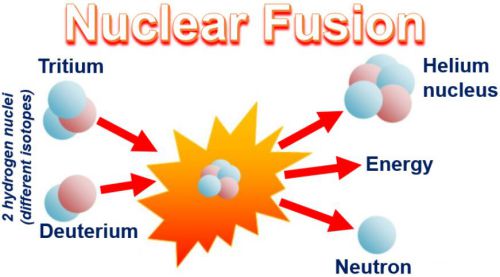The new discovery could become a revolution in the nuclear energy industry
According to calculations, the hydrogen-boron reaction could produce more positive net energy than any current reactor. Even this reactor did not produce a byproduct of radioactive waste.
As we know, reactive human nuclei that create the power for our Sun may be the key to opening up this clean and unlimited energy on Earth.
But one of the greatest challenges of modern science is how to harness fusion reactions so that it creates more energy than energy consumed to produce a reaction. Recent research has found a solution to do that.
Instead of considering how to optimize conventional reactor designs, such as tokamaks or stellerators, a group of physicists tested a number of new reactions. They found that designing a unique reaction could be the key to achieving positive nuclear integration because it has the potential to generate more energy than it uses.
The main difference apart from the shape of the resulting molecule, is that the nuclear reactor will be made with hydrogen and boron molecules, instead of hydrogen isotopes like deuterium and tritium. And it uses lasers to heat the core up to 200 times the center of the Sun. If the group's calculations were accurate, the hydrogen-boron reaction could produce greater positive net energy than any current reactor. Another advantage is that the hydrogen-boron reactor does not produce neutrons and therefore does not produce a byproduct of radioactive waste.
Researcher Heinrich Hora, of the University of New South Wales, Australia, said: "It is most interesting to see these reactions taking place in recent experiments and simulations. I think this has proved Our approach is right and ahead of all other fusion energy technologies ".
Nuclear fusion provides the opposite approach to today's nuclear-based fission reactions: instead of atoms being split, they are combined or fused together. It is similar to the reactions that generate energy for the Sun, because lighter nuclei merge to produce heavier particles thanks to extremely high temperatures and pressures.
In fact, when applying the above principle, there were many difficulties. Two years ago, the German Wendelstein 7-X stellerator reactor was officially put into use and crossed the boundaries of theory and practice.

The current popular model of nuclear fusion between two isotopes of hydrogen.
But despite all the advances in nuclear science, the barrier of energy to produce reactions and the energy produced after the reaction is still very large. Simply put, that's because these machines take a lot of energy to create plasma.
In fact, Wendelstein 7-X is not even ideal to create a usable amount of energy. It is just a demonstration of the concept of theory.
But for years, Hora and her team have worked to create other designs. And in this project, the team experimented with how to conduct experiments as well as through simulation. The hydrogen-boron reactor works by activating the fusion reaction from a laser beam focusing a million billion watts of electricity in just a trillionth of a second.

Diagram of hydrogen-boron reaction.(UNSW)
The most recent tests have introduced a hydrogen-boron approach to other similar technologies, including deuterium-tritium fusion, which is being studied (and also has the disadvantage of producing radioactive waste. ).
The team also offers a roadmap for the development of a hydrogen-boron bond reaction. The good news is that if future studies do not show any technical obstacles to this approach, a prototype reactor could be built within the next decade.
Although there are still many challenges in optimizing the necessary reactions and keeping them stable enough to generate electricity, if this new fusion technique can be applied it will be of great benefit.
Warren McKenzie, executive director of patent-pending HB 11, said: " With this reaction, fuels and wastes are safe, the reactor will not need a heat exchanger. and the steam turbine generator and the lasers we need can be purchased ".
- China invested in building 5 nuclear plants in the UK
- Russia strengthens the safety of nuclear power plants
- Russia develops a nuclear power engine that takes people to Mars for 45 days
- These ideas may create a real revolution in the aviation industry
- Oil sand can be a big step in the American energy revolution
- China and nuclear power strategy
- Russia's prestigious nuclear research institute
- What is Industry 4.0 Revolution?
- Atomic energy industry recruits human resources
- Burning ice - a new energy revolution?
- Nuclear energy still has a place in the future
- History of formation and development of nuclear energy
 'Fine laughs' - Scary and painful torture in ancient times
'Fine laughs' - Scary and painful torture in ancient times The sequence of numbers 142857 of the Egyptian pyramids is known as the strangest number in the world - Why?
The sequence of numbers 142857 of the Egyptian pyramids is known as the strangest number in the world - Why? History of the iron
History of the iron What is alum?
What is alum?